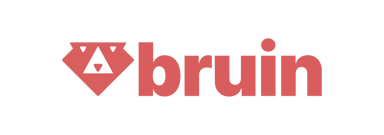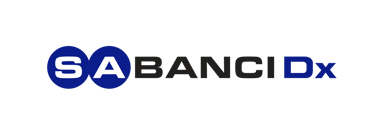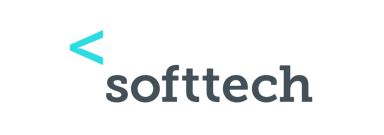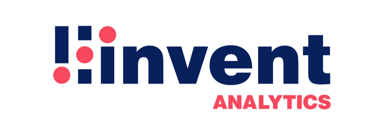Human Capital Management
Human Capital Management (HCM) is a strategic approach to managing and optimizing an organization's workforce. It involves recruiting, developing, and retaining employees to maximize their value and contribute to the company's success. HCM encompasses various practices and technologies aimed at improving employee performance and ensuring that the right talent is in place to meet organizational goals.
Its people are an organization’s most valuable asset; Human Capital Management (HCM) empowers HR professionals to manage this asset effectively, fostering a high-performing and engaged workforce. ⭐️
What is Human Capital Management?
Human Capital Management (HCM) refers to a set of practices related to human resource management, centered around workforce acquisition, management, and optimization. The goal of HCM is to treat employees as assets whose value can be maximized through strategic management. HCM goes beyond mere HR administration, focusing on maximizing the value employees bring to the organization.
Benefits of HCM Systems
Implementing an HCM system offers numerous advantages for HR professionals and the organization as a whole. Here are some key benefits👇:
- Streamlined Processes: HCM automates repetitive tasks like payroll, timekeeping, and benefits administration, freeing up HR's time for more strategic initiatives.
- Enhanced Talent Acquisition: Attract top talent with a centralized applicant tracking system (ATS) and a seamless recruitment process.
- Improved Employee Engagement: Create a positive work environment with features like performance reviews, recognition programs, and personalized learning opportunities.
- Data-Driven Decisions: Gain valuable insights into workforce trends and employee performance with comprehensive reporting and analytics tools.
- Reduced Costs: HCM systems can significantly reduce administrative costs and improve HR efficiency.
Elements of Human Capital Management
A comprehensive HCM system typically incorporates the following core functionalities:
Workforce Management
Schedule employees, track time and attendance, and manage leave requests.
Talent Management
Attract, recruit, onboard, and develop top talent through targeted recruitment strategies and employee development programs.
Learning Management
Deliver engaging training programs and track employee learning progress.
Performance Management
Set clear goals, provide ongoing feedback, and conduct performance reviews to optimize employee performance.
Compensation and Benefits
Manage payroll, administer benefits programs, and offer competitive compensation packages.
Reporting and Analytics
Generate reports and gain insights into workforce data to make informed HR decisions.
The Role of HCM in a Successful Organization
Human Capital Management (HCM) isn't just about managing people, it's about strategically leveraging your workforce to achieve organizational success.
HCM ensures HR initiatives are tightly aligned with the company's overall goals, fostering a positive and engaging work environment that keeps employees happy and productive. This translates into tangible benefits. Streamlined processes, efficient talent management, and targeted training programs all contribute to a more productive workforce.
HCM doesn't stop there. It also helps HR optimize processes, reduce administrative costs, and attract and retain top talent, giving your organization a significant competitive advantage in today's dynamic job market.
The Different Types of HCM Software
The HCM software market offers a variety of solutions catering to different organizational needs and budgets. Here are some of the main types 📌 :
Core HR Systems
Manages core HR functions like payroll, benefits, and timekeeping.
Talent Management Software (TMS)
Focuses on talent acquisition, onboarding, learning, and performance management.
Learning Management Systems (LMS)
Delivers and manages online training programs.
Human Resource Information Systems (HRIS)
Centralized database for storing and managing employee data.
Workforce Management Software
Manages scheduling, time and attendance, and workforce planning.
How to Choose the Right Human Capital Management System
Choosing the right HCM system is crucial for maximizing its benefits. Consider these factors 👇:
- Company Size and Needs: Ensure the system can scale with your organization and meet your specific requirements.
- Integration Capabilities: Look for software that can integrate with your existing HR and business systems.
- Scalability: Ensure the system can accommodate future growth and evolving needs.
- User Experience: Choose a system that is intuitive and easy for employees and HR professionals to use.
- Vendor Support: Consider the level of customer support and training offered by the vendor.
- Cost: Evaluate the total cost of ownership, including implementation and ongoing maintenance fees.
How to Implement an HCM System
Implementing a new HCM system requires careful planning and execution. Here's a basic roadmap 🤝:
- Define Project Scope and Goals: Clearly outline your objectives and desired outcomes. Decide on what you aim to achieve.
- Assess Current Processes: Evaluate your existing HR processes to identify areas for improvement.
- Select the Right System: Conduct thorough research and vendor evaluations. Select a vendor that meets your needs and budget.
- Data Migration: Plan for seamless data transfer from existing systems.
- System Configuration: Tailor the system to your specific workflows and processes.
- Change Management: Develop a comprehensive plan to address employee concerns and ensure smooth adoption.
- Training: Provide training for HR professionals and employees on using the new system effectively.
- Testing and Go-Live: Conduct thorough testing before launching the system.
- Ongoing Support: Establish a plan for ongoing support and system maintenance.
Best Practices for Human Capital Management
The journey to a successful HCM strategy is paved with continuous improvement. Here are some key practices to keep you on track:
Leverage data analytics to gain valuable insights and make informed HR decisions. Regularly evaluate your HCM system to ensure it aligns with your evolving needs.
Actively seek employee feedback on the system and address their concerns to foster engagement. Invest in ongoing training and development programs to keep your workforce equipped with the latest skills.
Stay up-to-date with labor laws and ensure your HCM practices remain compliant.
By following these best practices, you can continuously optimize your HCM strategy and maximize its impact on your organization. ⭐️
Challenges of Implementing HCM Systems
While HCM offers numerous benefits, implementing and utilizing a new system comes with its own set of challenges:
- Cost: HCM systems can be expensive, and ongoing maintenance costs need to be factored in.
- Change Management: Transitioning to a new system can be disruptive for employees. Effective change management strategies are crucial.
- Data Security: HCM systems store sensitive employee data. Implementing strong security measures is crucial.
- Integration Challenges: Integrating the HCM system with existing software can be complex and time-consuming.
- Data Quality: The success of HCM hinges on accurate data. Ensuring data quality during migration and ongoing use is essential.
By acknowledging these challenges and planning accordingly, HR professionals can ensure a smooth implementation and maximize the value of their HCM system.
Difference Between HCM and HRIS
While HCM and HRIS are often used interchangeably, there's a subtle difference. ⚖️
HCM represents the big-picture strategy for managing your workforce. It encompasses everything from attracting top talent to fostering a positive work environment.
HRIS, on the other hand, is the technological tool that helps execute this strategy. It streamlines tasks, stores employee data, and provides valuable insights to HR professionals.
Think of HCM as the roadmap and HRIS as the vehicle that helps navigate the journey towards a high-performing workforce.
The Role of Applicant Tracking Systems in HCM
HCM excels with a strong foundation. Applicant Tracking Systems (ATS) play a vital role, streamlining the crucial talent acquisition stage within HCM. 📌
- Effortless Recruitment: Automate tasks like screening, scheduling, and communication, saving HR professionals valuable time and attracting top talent. An ATS streamlines the recruitment process for both HR and candidates.
- Data-Driven Decisions: Gain valuable insights from candidate data to make informed hiring choices. Hirex offers industry-leading analytics and reporting features, allowing you to identify top talent and optimize your recruitment strategy.
- Seamless Integration: Integrate an ATS with your HCM system for a smooth flow of candidate data throughout the employee lifecycle. Hirex boasts effortless integration with leading HCM solutions, eliminating data silos and fostering a more efficient talent management process.
By strategically integrating an ATS, you can significantly enhance your HCM efforts and build a high-performing workforce.
The Future of Human Capital Management
The future of HCM is filled with exciting possibilities. Here are some trends to watch 👩💻:
- Artificial Intelligence (AI): AI-powered HCM systems will streamline tasks, personalize the employee experience, and predict future workforce needs.
- Cloud-Based Solutions: Cloud-based HCM systems will offer increased flexibility, scalability, and accessibility.
- Focus on Employee Wellbeing: HCM will place greater emphasis on employee wellbeing, promoting a healthy work-life balance and fostering a culture of mental health awareness.
- Personalized Learning and Development: HCM systems will leverage AI and big data to deliver personalized learning pathways for each employee.
By embracing these trends and implementing strong HCM practices, HR professionals can empower their workforce, optimize talent management, and drive organizational success.
Human Capital Management (HCM) is a critical component of modern HR strategy, aiming to maximize the value of employees and align their efforts with organizational goals. By understanding the benefits, elements, and best practices of HCM, HR professionals can effectively manage their workforce and drive business success. ⭐️
Get a demo
- Quickly find top candidates with smart application management
- Improve team collaboration using built-in communication and workflows
- Offer a smooth candidate experience to strengthen your employer brand
- Count on 24/7 support for a hassle-free hiring process
- Quickly find top candidates with smart application management
- Improve team collaboration using built-in communication and workflows
- Offer a smooth candidate experience to strengthen your employer brand
- Count on 24/7 support for a hassle-free hiring process
"We truly felt the speed difference. Everything was smoother, and candidate feedback was much more positive. It made our jobs easier."

Trusted by 100+ teams
Get Informed,F.A.Q.
Revolutionize your hiring process with our transformative Applicant Tracking System (ATS.)
Suggested keywords
What is Cultural Fit?
Let's talk numbers - 89% of employers put cultural fit at the top of their hiring checklist. Pretty huge. But wait a second... what exactly does cultural fit mean in today's fast-moving workplace?The ...
Employee NPS Benchmarks
An Employee NPS benchmark is basically a way to see how your company’s employee satisfaction stacks up against others. It helps turn your eNPS score into something useful by giving it context. 📌You'r...
Salary Benchmarking
Salary benchmarking is basically figuring out if what you're paying your team makes sense compared to what others are offering for similar roles. It’s like checking the going rate before you buy somet...















